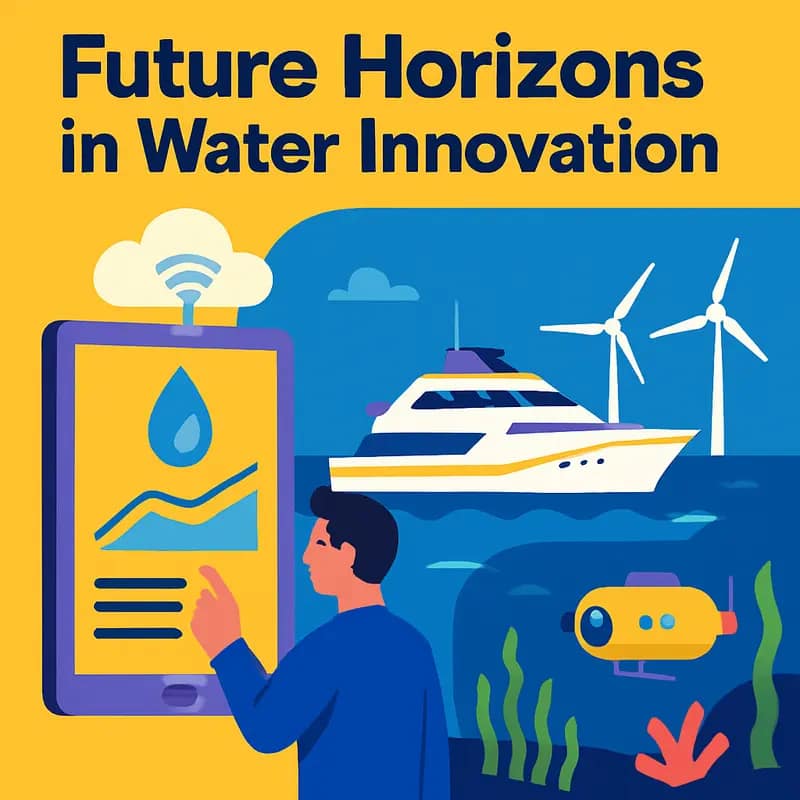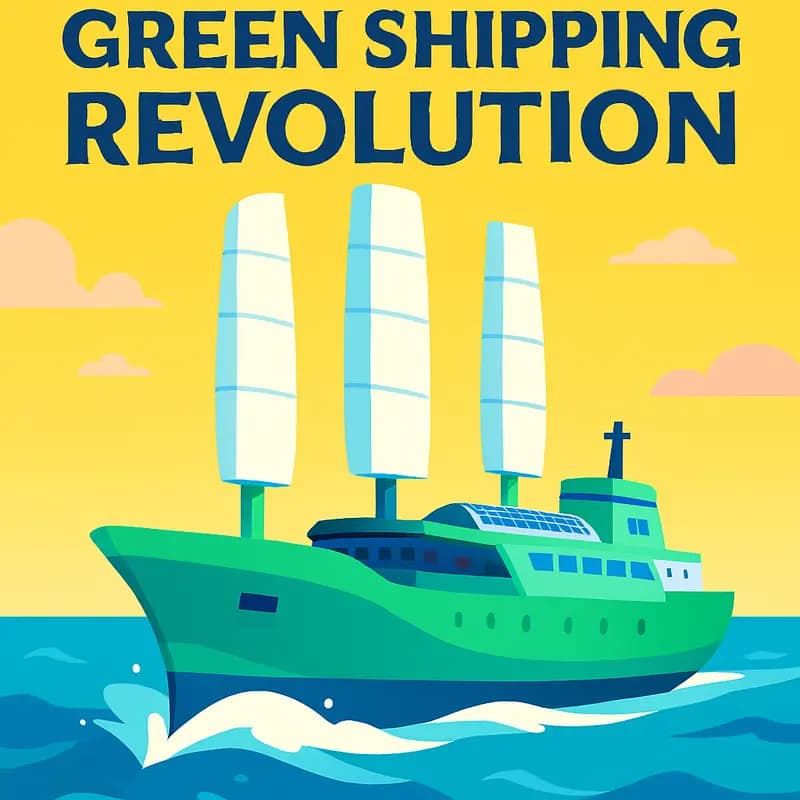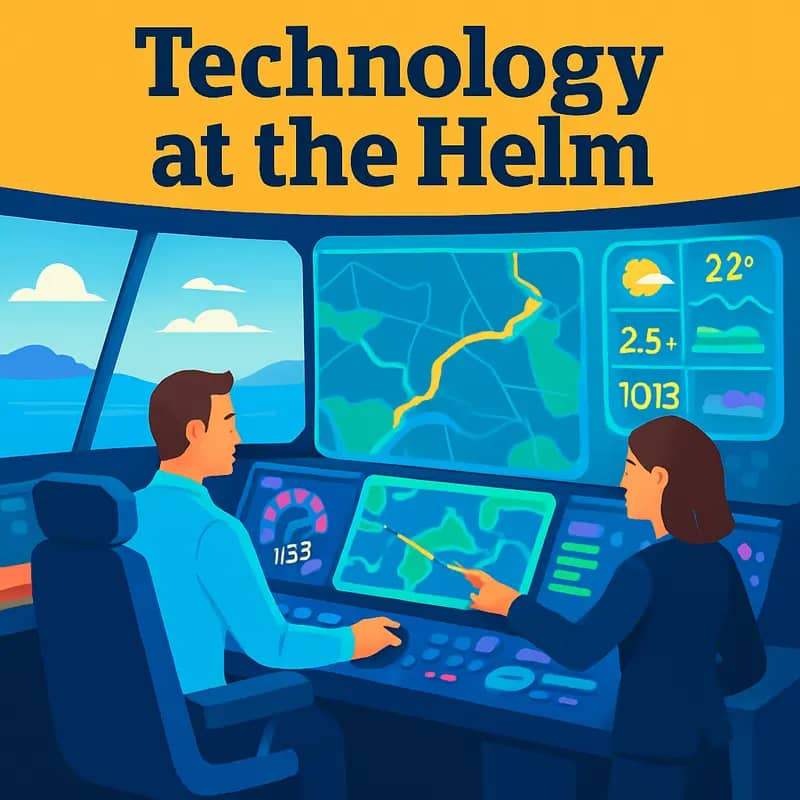From the historic port city of Bergen, Grieg Edge is charting a bold course in water innovation. As the venture and development arm of the Grieg Maritime Group, this Norwegian powerhouse has evolved beyond its shipping roots to become a key player in sustainable ocean technology. With investment tickets ranging from 5 to 30 million NOK, Grieg Edge strategically backs promising water startups from seed to Series A, while maintaining a laser focus on ocean cleanup, pollution prevention, and innovative desalination solutions. Their leadership in ventures like Ocean Oasis demonstrates their commitment to addressing global water challenges through technological innovation, all while staying true to their Nordic maritime heritage.
Grieg Edge is part of my Ultimate Water Investor Database, check it out!
Investor Name: Grieg Edge
Investor Type: CVC
Latest Fund Size: $ Million
Dry Powder Available:
Typical Ticket Size: $1M – $3M
Investment Themes: Ocean cleanup & pollution, desalination/freshwater for coasts, sustainable marine technologies
Investment History: $0 spent over 2 deals
Often Invests Along:
Already Invested In: Ocean Oasis
Leads or Follows: Lead
Board Seat Appetite: Rare
Key People:
Nordic Roots, Global Impact

Deeply rooted in Norway’s rich maritime heritage, Grieg Edge emerged from a traditional shipping background to become a transformative force in sustainable ocean technology. The company’s evolution reflects a profound understanding that the future of maritime operations lies at the intersection of environmental stewardship and technological innovation.
Grieg Edge’s transformation began with a strategic pivot that leveraged their extensive maritime expertise while embracing sustainability as a core driver. Rather than viewing environmental regulations as constraints, the company recognized early on that sustainable solutions would define the future of ocean industries. This insight shaped their investment philosophy, which prioritizes technologies that deliver both environmental and economic benefits.
The company’s geographic focus remains anchored in the Nordic region, where a robust innovation ecosystem and strong environmental policies create an ideal testing ground for new technologies. However, Grieg Edge’s vision extends far beyond Scandinavian waters. Their investments target solutions with global scalability, particularly in regions facing acute water challenges.
What sets Grieg Edge apart is their integrated approach to water innovation. Rather than pursuing isolated technological solutions, they focus on creating synergies between different aspects of maritime operations and water management. This holistic strategy has proven particularly effective in addressing complex challenges where traditional single-point solutions fall short.
Their investment portfolio reflects a carefully calibrated balance between immediate practical applications and longer-term transformative potential. The company has shown particular interest in technologies that can help traditional maritime operations become more sustainable while opening new opportunities in ocean resource management.
In line with Norway’s leadership in environmental initiatives, Grieg Edge has developed a distinctive approach to validation and scaling. They leverage their deep understanding of maritime operations to identify solutions that can be effectively implemented in real-world conditions, while maintaining the agility to adapt to emerging opportunities.
This evolution from traditional shipping to sustainable innovation leader hasn’t been without challenges. The company has had to develop new competencies, build different types of partnerships, and sometimes make difficult choices between conventional business models and innovative approaches. However, these challenges have ultimately strengthened their position as a pioneer in sustainable ocean technology.
Their success in this transformation offers valuable lessons for other traditional maritime companies looking to pivot toward sustainability. It demonstrates that deep industry knowledge, when combined with a forward-thinking approach to innovation, can create powerful opportunities for positive environmental impact while maintaining commercial viability.
Making Waves in Water Technology

Grieg Edge has positioned itself at the forefront of marine technology innovation by strategically focusing on three key areas of water technology development: ocean cleanup systems, pollution prevention solutions, and advanced desalination technologies.
In the realm of ocean cleanup, the company has pioneered autonomous collection systems that target both macro and microplastic pollution. These systems leverage artificial intelligence and advanced sensors to identify and extract plastic waste with unprecedented precision. The technology can distinguish between marine life and debris, ensuring minimal ecological impact during cleanup operations.
Pollution prevention represents another crucial pillar of Grieg Edge’s investment strategy. The company has developed breakthrough technologies for treating ballast water and preventing oil spills at sea. Their innovative approach combines preventive maintenance systems with real-time monitoring capabilities, allowing vessel operators to detect potential contamination risks before they materialize into environmental disasters.
Perhaps most notably, Grieg Edge has made significant strides in desalination technology, focusing on energy-efficient solutions that could revolutionize freshwater production. Their investment in membrane technology research has yielded promising results in reducing the energy intensity of desalination processes. By integrating renewable energy sources and implementing advanced heat recovery systems, they’ve managed to decrease the carbon footprint of desalination operations by up to 60% compared to conventional methods.
What sets Grieg Edge apart in water technology innovation is their holistic approach to sustainability. Rather than viewing each challenge in isolation, they recognize the interconnected nature of marine environmental issues. This perspective has led to the development of integrated solutions that address multiple challenges simultaneously. For instance, their desalination systems are designed to minimize brine discharge, while their cleanup technologies incorporate waste-to-energy conversion capabilities.
The company has demonstrated particular prowess in scaling these technologies through strategic partnerships. By collaborating with research institutions and environmental organizations, Grieg Edge has accelerated the development and deployment of these solutions across different maritime contexts. Their commitment to open innovation has fostered a collaborative ecosystem that speeds up the transition from laboratory breakthroughs to practical applications.
Grieg Edge’s investment in water technology extends beyond hardware solutions. The company has embraced digitalization, developing sophisticated monitoring and control systems that optimize the performance of their water treatment technologies. This digital layer enables predictive maintenance, reduces operational costs, and provides valuable data for continuous improvement of their systems.
Investment Strategy and Partnership Approach

Grieg Edge has developed a sophisticated investment methodology that combines traditional maritime industry expertise with forward-thinking approaches to water technology innovation. The company’s investment strategy centers on strategic partnerships and calculated risk-taking, with ticket sizes typically ranging from $2-10 million for early-growth stage companies.
Rather than pursuing a spray-and-pray approach, Grieg Edge carefully selects investment opportunities where they can add significant value beyond capital. They frequently take lead investor positions, particularly in Series A and B rounds, allowing them to help shape company strategy and facilitate industry connections. This hands-on approach leverages their deep maritime sector knowledge and extensive network.
Their partnership model emphasizes long-term commitment over quick returns. When evaluating potential investments, Grieg Edge looks for strong alignment with their sustainability goals and scalable solutions that can be implemented across the maritime industry. They often structure deals to include pilot projects or commercial agreements alongside equity investments, creating pathways to validate technologies in real-world conditions.
The company maintains a balanced portfolio approach, allocating investments across different technology readiness levels and risk profiles. While they occasionally participate in seed rounds for breakthrough technologies, most investments target companies with proven solutions ready for commercial scaling. This strategy helps manage risk while maintaining exposure to potentially transformative innovations.
Greig Edge’s partnership approach extends beyond individual investments to include collaboration with other maritime industry players, research institutions, and government bodies. They frequently form investment syndicates with complementary strategic investors, combining resources and expertise to support portfolio companies more effectively.
Unlike traditional venture capital firms, Grieg Edge can provide portfolio companies with access to testing facilities, operational expertise, and customer relationships through their parent company’s extensive maritime operations. This operational support significantly enhances their value proposition as an investor and increases the likelihood of successful technology commercialization.
Their investment committee includes both financial experts and technical specialists, ensuring thorough evaluation of both commercial potential and technological validity. This dual-lens assessment approach has helped them maintain a strong track record while supporting innovative solutions that advance sustainable maritime practices.
Future Horizons in Water Innovation

Grieg Edge stands at the vanguard of maritime innovation, charting an ambitious course toward sustainable ocean technology that could reshape the industry’s future. Their forward-looking vision centers on developing integrated solutions that address multiple challenges simultaneously – from decarbonization to water quality management and resource efficiency.
At the heart of their innovation strategy lies a commitment to what they call “full-cycle sustainability.” This approach considers not just the immediate impact of new technologies, but their complete lifecycle effects on marine ecosystems, coastal communities, and global supply chains. By taking this holistic view, Grieg Edge aims to create solutions that deliver lasting positive change rather than quick fixes.
Their research and development pipeline focuses heavily on autonomous systems and AI-driven optimization. These technologies promise to dramatically reduce the environmental footprint of maritime operations while improving safety and efficiency. Particularly noteworthy is their work on smart ballast water management systems that adapt in real-time to changing conditions, potentially reducing energy consumption by up to 40% compared to conventional systems.
The company’s vision extends beyond traditional shipping concerns into broader ocean health initiatives. They are pioneering the development of integrated ocean monitoring networks that combine sensor technologies with advanced data analytics. This infrastructure could provide unprecedented insights into marine ecosystem health and enable more proactive environmental protection measures.
Collaboration forms a cornerstone of their future strategy. Grieg Edge actively seeks partnerships with research institutions, technology startups, and even competitors when addressing industry-wide challenges. This approach, which they term “cooperative innovation,” recognizes that the most significant advances often emerge from combining diverse expertise and resources.
Perhaps most ambitious is their commitment to developing what they call “regenerative maritime solutions” – technologies and practices that not only minimize environmental impact but actively contribute to ocean health restoration. This includes exploring novel approaches to marine carbon capture and developing systems that can help rebuild damaged coastal ecosystems while maintaining commercial operations.
In line with the growing focus on sustainable ocean technology, Grieg Edge is also investing heavily in digitalization and data-driven decision-making tools. These investments aim to optimize route planning, reduce fuel consumption, and minimize environmental impacts across their operations. Working closely with environmental scientists and marine biologists, they’re developing new metrics for measuring and monitoring the health of ocean ecosystems affected by maritime activities.
As explored in The Climate Change Adaptation Opportunities You Don’t Want to Miss Out, their approach represents a broader shift in how maritime companies view their role in environmental stewardship. By positioning themselves at the intersection of technology, sustainability, and maritime operations, Grieg Edge is helping define what the future of responsible ocean commerce might look like.
The Green Shipping Revolution

Grieg Edge has emerged as a transformative force in maritime sustainability by fundamentally reimagining how ships can operate in harmony with ocean ecosystems. At the heart of their revolution lies an ambitious vision: creating zero-emission corridors that connect major ports while drastically reducing the environmental impact of marine transport.
The company’s approach to sustainable shipping extends far beyond incremental improvements. Their vessel designs integrate multiple cutting-edge solutions – from hull optimization that reduces drag to innovative propulsion systems that can operate on clean fuels like hydrogen and ammonia. This innovative mindset mirrors successful transformations seen across other sectors.
One of Grieg Edge’s most impactful initiatives has been the development of green corridors – designated maritime routes where zero-emission solutions are supported by the necessary infrastructure and operational frameworks. These corridors serve as proving grounds for sustainable technologies while creating economies of scale that make green shipping commercially viable.
The company’s vessels incorporate advanced energy management systems that continuously optimize fuel consumption and emissions. By leveraging real-time data analytics, these ships can adjust their operations based on weather conditions, cargo weight, and route characteristics. This intelligent approach to maritime operations has demonstrated that environmental stewardship and operational efficiency are not mutually exclusive goals.
Significantly, Grieg Edge has fostered collaboration across the maritime industry to accelerate the adoption of sustainable practices. By working with ports, fuel suppliers, and technology providers, they have helped establish the infrastructure necessary for zero-emission shipping. Their partnerships have been crucial in developing standards for alternative fuels and creating the logistics networks needed to support clean maritime transport.
The impact of these initiatives extends beyond environmental benefits. Grieg Edge’s sustainable vessels have proven more cost-effective over their operational lifetime, with reduced fuel consumption and maintenance requirements. This economic advantage has helped convince skeptics that green shipping is not just environmentally necessary but commercially sound.
As regulations around maritime emissions tighten globally, Grieg Edge’s early investment in sustainable solutions has positioned them at the forefront of the industry’s transformation. Their experience in developing and implementing green technologies provides valuable insights for the broader maritime sector as it navigates the transition to sustainable operations.
Technology at the Helm

At the core of Grieg Edge’s maritime transformation lies a sophisticated technology ecosystem that seamlessly integrates artificial intelligence, advanced sensors, and innovative propulsion systems. Building on their established sustainability initiatives, the company has developed a multi-layered approach to optimize vessel operations while minimizing environmental impact.
The company’s AI-driven fleet management system processes millions of data points in real-time, analyzing everything from weather patterns to engine performance. Advanced machine learning algorithms continuously optimize routing and speed, reducing fuel consumption by up to 15% while maintaining strict delivery schedules. These smart systems also predict maintenance needs before issues arise, dramatically reducing downtime and extending equipment lifespan.
Perhaps most impressive is Grieg Edge’s revolutionary approach to propulsion technology. Their hybrid power systems combine conventional engines with electric motors, enabling vessels to switch between power sources based on operational requirements. When approaching ports or navigating environmentally sensitive areas, ships can transition to zero-emission electric mode. The company’s energy recovery systems capture waste heat from engines and convert it into usable power, further improving overall efficiency.
Sensor networks blanket each vessel, creating a digital nervous system that monitors structural integrity, cargo conditions, and environmental parameters. These sensors feed into a centralized platform that provides real-time situational awareness to both onboard crews and shore-based operations centers. The platform’s predictive analytics capabilities help identify potential safety risks and environmental compliance issues before they become critical.
In the realm of autonomous operations, Grieg Edge is pioneering semi-autonomous navigation systems that assist crews during challenging maneuvers and adverse conditions. While maintaining human oversight, these systems leverage computer vision and LiDAR technology to enhance safety and precision. The company has also developed smart mooring solutions that automate docking procedures, reducing port time and associated emissions.
What sets Grieg Edge apart is their approach to technology integration. Rather than pursuing isolated solutions, they’ve created an interconnected ecosystem where each innovation amplifies the benefits of others. This systems-thinking approach, combined with their commitment to data-driven decision-making, has established them as a leader in maritime technology innovation.
Much like the innovative approaches discussed in the evolution of water innovation, Grieg Edge’s technological transformation demonstrates how traditional maritime operations can be revolutionized through strategic application of cutting-edge solutions. Their success proves that technological innovation and environmental stewardship can go hand in hand, creating a blueprint for the future of sustainable shipping.
Sustainable Investment Horizons

As maritime industries face mounting pressure to decarbonize, Grieg Edge’s innovative sustainability projects represent compelling investment opportunities that are reshaping the shipping sector’s future. The company’s strategic focus on green technologies has created a robust portfolio that attracts both traditional maritime investors and sustainability-focused funds.
A key driver of investment appeal lies in Grieg Edge’s dual approach to sustainable maritime solutions. Their green ammonia projects demonstrate significant potential for both environmental impact and financial returns. By developing zero-emission fuel infrastructure and vessels simultaneously, they’ve created synergistic investment opportunities that reduce risk while maximizing potential upside.
The company’s green corridor initiatives between major ports have garnered particular attention from institutional investors. These projects combine infrastructure development, vessel operations, and fuel supply chains into integrated investment opportunities. Early estimates suggest these corridors could reduce emissions by up to 90% while generating steady returns through long-term contracts and operational efficiencies.
Grieg Edge has also pioneered innovative financing structures that make sustainable shipping investments more accessible. Their ‘green shipping as a service’ model allows investors to participate in the transition to sustainable shipping without taking on direct vessel ownership risks. This approach has attracted impact investors seeking to align financial returns with environmental benefits.
The scalability of Grieg Edge’s projects presents another compelling investment narrative. Their modular approach to green technology implementation means successful pilots can be rapidly expanded across multiple routes and vessel types. This scalability not only reduces technology risk but also creates multiple exit opportunities for early investors.
Regulatory tailwinds further enhance the investment case. With increasingly stringent emissions regulations on the horizon, Grieg Edge’s early mover advantage in sustainable shipping solutions positions them favorably. Their projects often qualify for government incentives and support, providing additional revenue streams and risk mitigation.
Perhaps most significantly, Grieg Edge’s investment opportunities align with the growing demand for ESG-compliant maritime assets. As major shipping companies and cargo owners commit to emissions reduction targets, the market for sustainable shipping solutions continues to expand. This creates natural demand for Grieg Edge’s technologies and services, supporting long-term value creation for investors.
The company’s approach to risk management has also evolved to meet investor expectations. Through strategic partnerships with technology providers, port authorities, and major shipping lines, they’ve created robust ecosystems around their sustainable projects. This collaborative approach helps distribute risk while ensuring project viability through guaranteed demand and operational support.
Future Waters: The Road Ahead

Grieg Edge’s vision for maritime sustainability extends far beyond conventional solutions, charting an ambitious course for the coming decades. The company’s forward-looking strategy centers on developing breakthrough technologies that will fundamentally transform ocean operations while preserving marine ecosystems.
A cornerstone of their future initiatives involves expanding intelligent vessel systems that optimize routes, reduce fuel consumption, and minimize environmental impact. By leveraging advanced AI and machine learning, these systems will enable ships to dynamically adjust operations based on real-time ocean and weather conditions.
In the realm of clean propulsion, Grieg Edge is pioneering hybrid and zero-emission solutions. Their research focuses on developing next-generation hydrogen fuel cells and advanced battery systems specifically designed for maritime applications. The goal is to create propulsion technologies that eliminate carbon emissions while maintaining the power and reliability needed for ocean-going vessels.
Water treatment innovation stands as another critical focus area. The company is developing advanced filtration systems that not only process ballast water but also actively remove microplastics and other emerging pollutants from ocean waters. These systems will integrate with vessel operations, allowing ships to contribute to ocean cleanup during routine voyages.
Perhaps most ambitious is Grieg Edge’s commitment to circular maritime economics. They envision a future where vessels serve as floating resource recovery platforms, extracting valuable materials from ocean waste while generating clean energy. This approach transforms ships from mere transportation vessels into mobile environmental solution providers.
To support these initiatives, Grieg Edge is establishing a network of innovation hubs along major shipping routes. These facilities will serve as testing grounds for new technologies while fostering collaboration between maritime industry players, research institutions, and environmental organizations.
The company recognizes that success requires more than technological innovation. They are actively developing new business models that align profitability with environmental stewardship. This includes performance-based contracts that reward reduced emissions and innovative financing mechanisms that make sustainable technologies accessible to smaller operators.
As climate change continues to impact ocean conditions, Grieg Edge is also investing in adaptive technologies. These include advanced hull designs that perform efficiently in varying sea states and smart navigation systems that help vessels avoid increasingly frequent extreme weather events.
Through these combined efforts, Grieg Edge aims to establish new standards for maritime sustainability, demonstrating that environmental protection and commercial success can go hand in hand. Their vision represents not just a roadmap for their own future, but a blueprint for transforming the entire shipping industry.
Final words
Grieg Edge stands as a compelling example of how traditional maritime expertise can be leveraged to drive innovation in water technology. Their strategic focus on ocean cleanup, pollution prevention, and sustainable desalination solutions, coupled with their thoughtful investment approach in the 5-30 million NOK range, positions them uniquely in the water technology landscape. As lead investors in groundbreaking ventures like Ocean Oasis, they demonstrate the value of combining deep industry knowledge with forward-thinking investment strategies. Their Nordic roots provide a strong foundation, while their global ambitions promise to extend their impact far beyond Scandinavian waters. For water entrepreneurs and impact investors, Grieg Edge represents more than just a funding source – they offer a partnership model that brings together maritime expertise, sustainable innovation, and strategic capital deployment. As the water technology sector continues to evolve, Grieg Edge’s balanced approach to innovation and sustainability sets a valuable example for the industry.
Wanna explore the Full List of Water Investors that cut at least two checks over the past decade? Check it out and bookmark it, I update it regularly!
Learn more: https://dww.show/the-ultimate-water-investor-database/
About us
Through my “(don’t) Waste Water” platform, I offer unique and insightful coverage of the water industry that combines technical expertise with engaging storytelling. If you haven’t yet, it might be time for you to subscribe to the podcast, the youtube channel and/or the newsletter!
